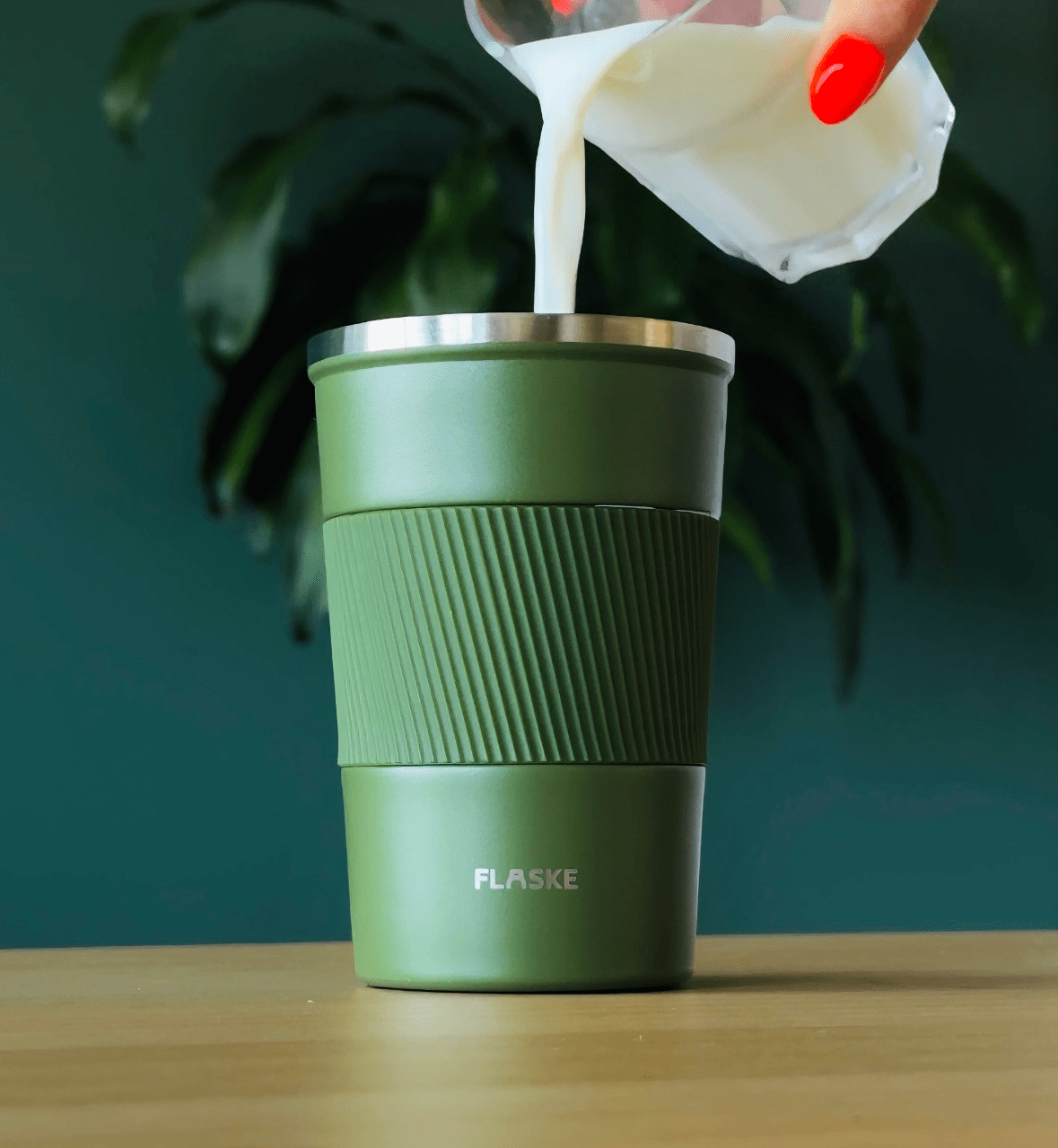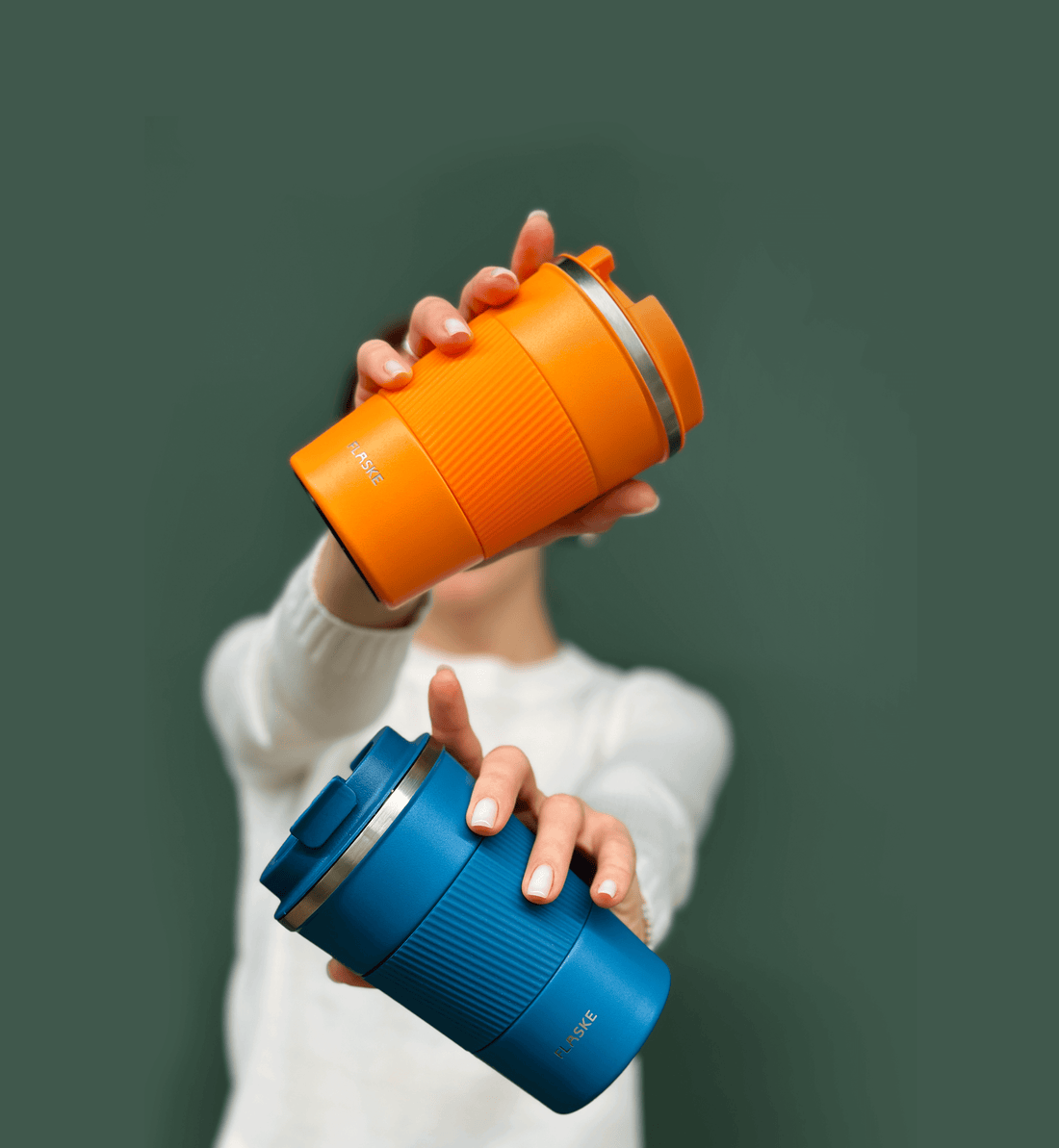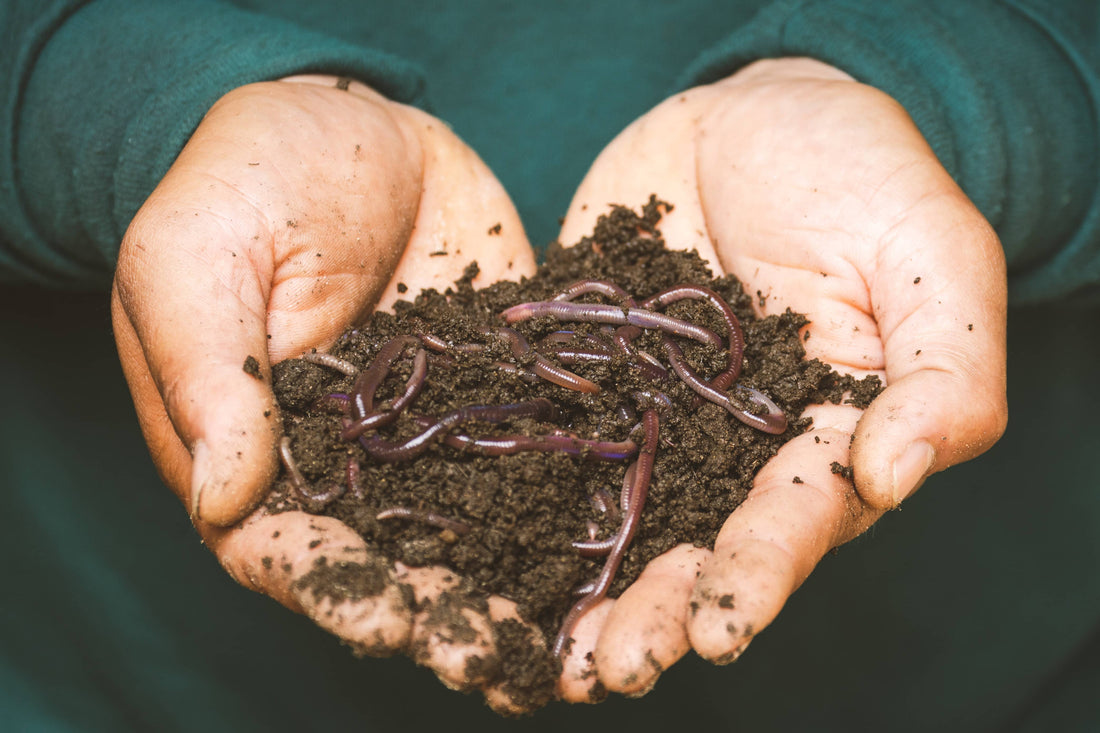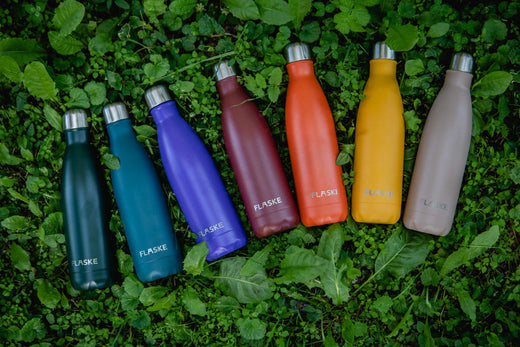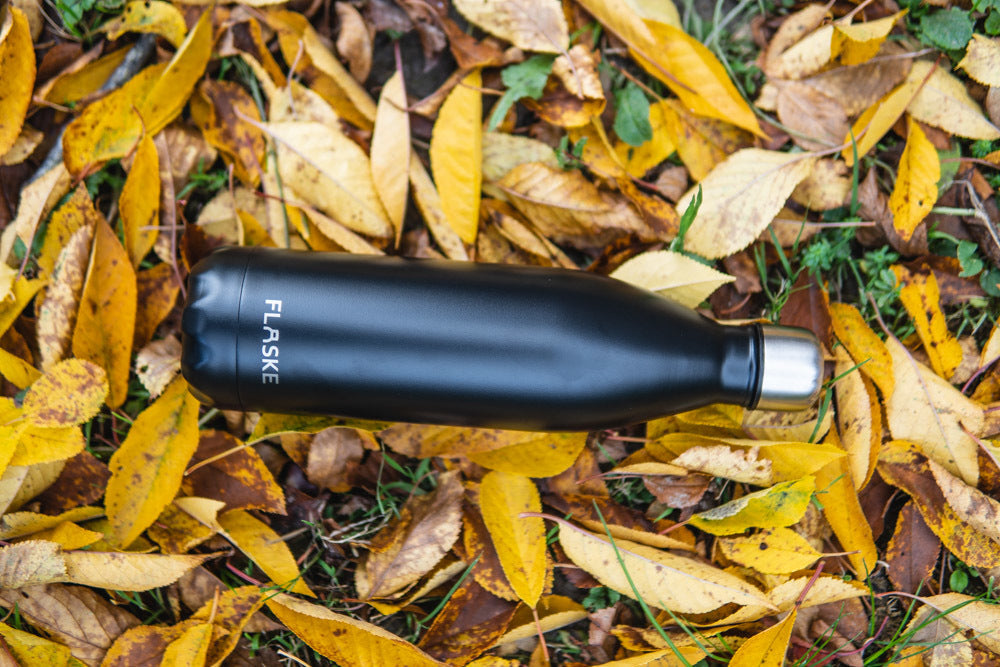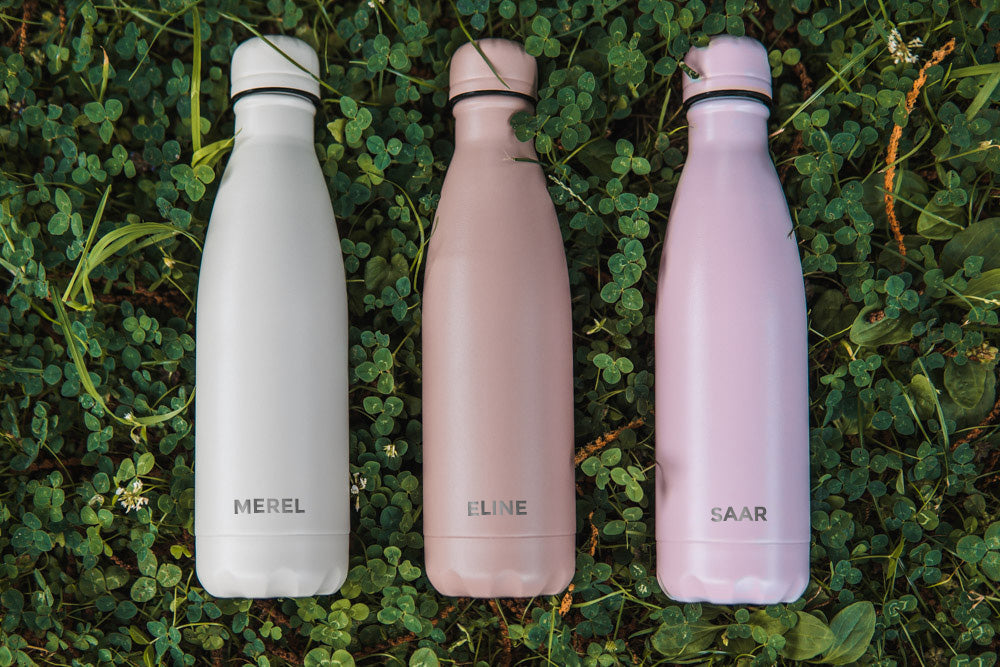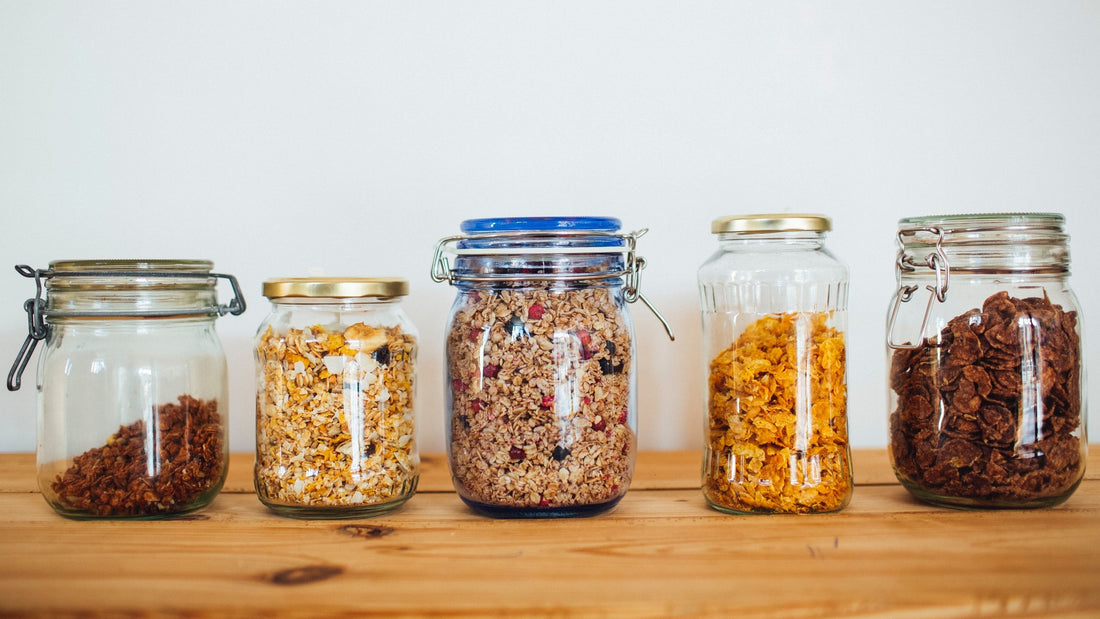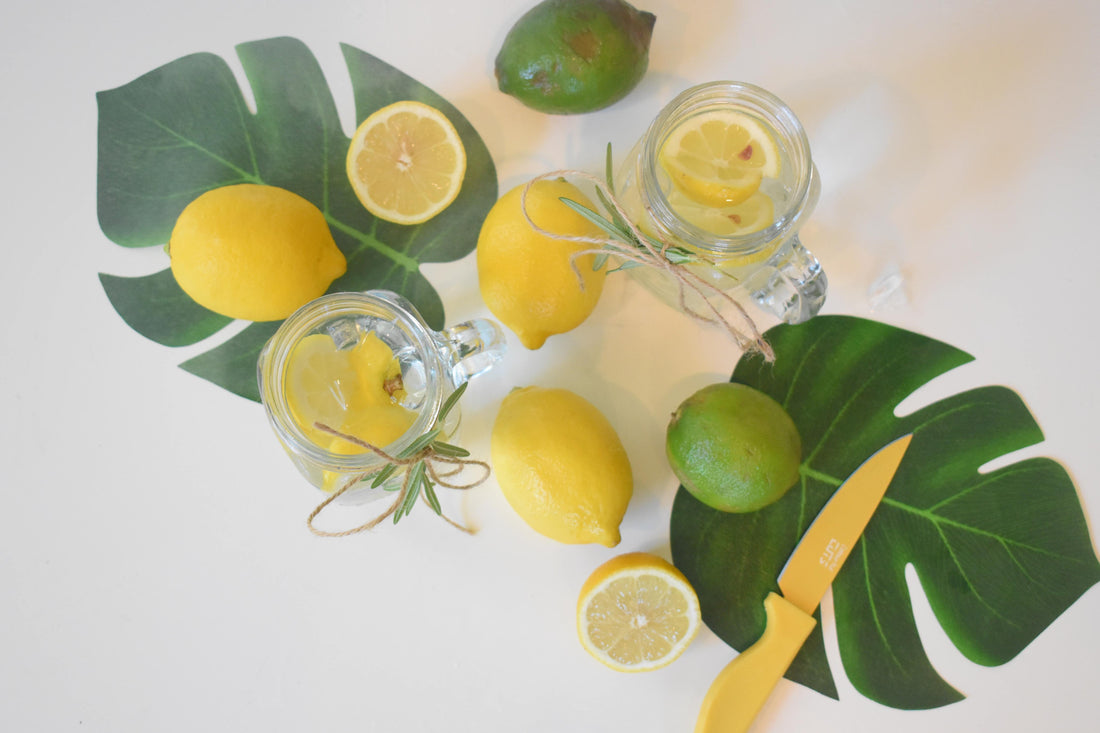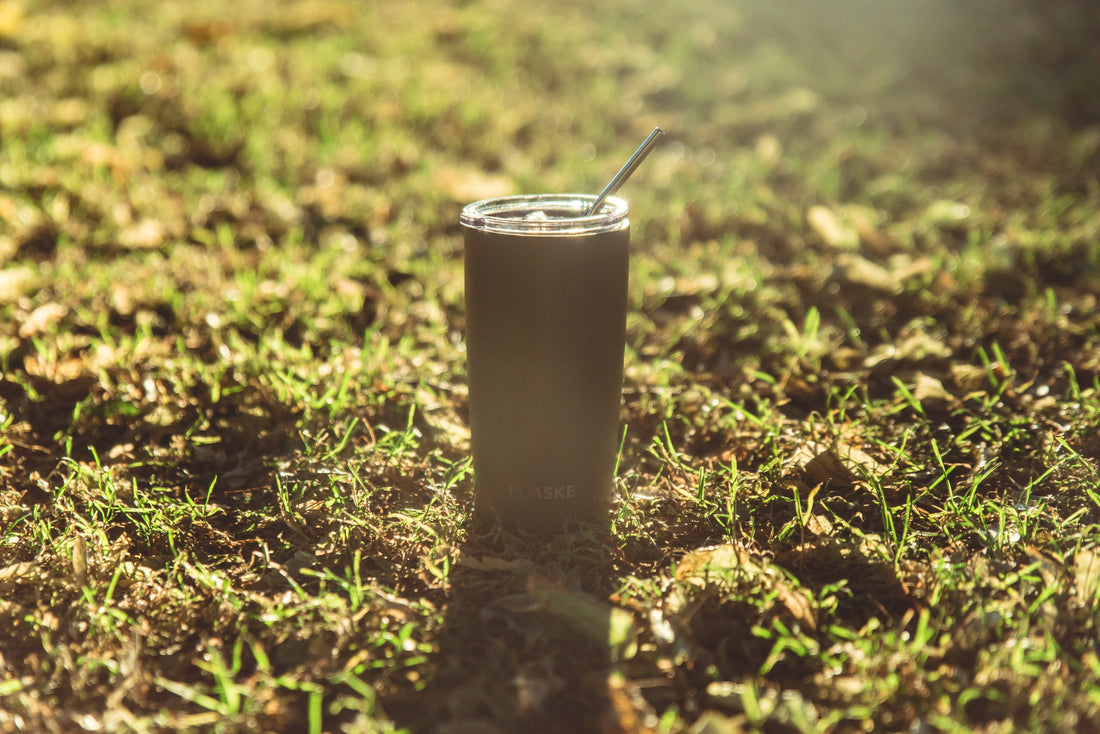Blogs - Interesting Blogs & News
How to Tackle Waste with Your Morning Coffee Routine
Beginning the day with a freshly brewed coffee may well put you in a good mood but have you ever considered how your morning routine contributes to pollution? What and where you choose to eat and drink at breakfast time impacts the amount of waste you produce more than you might expect. Take coffee, the most popular morning beverage in the world. Your morning coffee ritual might not produce any plastic waste if you buy your coffee grains from a zero-waste store and use compostable coffee filters. But what if you use non-recyclable espresso pods or single-use filters every day or you buy your daily coffee in a Styrofoam mug rather than bringing a reusable travel coffee mug to your local coffee store. The point is, our daily habits are the cause of most unnecessary waste. Often, these wasteful habits are easy to change, particularly when it comes to food and drinks. Let’s use coffee as an example and consider how you can minimise waste in your morning routine. Reduce Waste with your Morning Coffee Routine What coffee do you buy for home? Rise and shine and time to drink coffee. But where did you buy your coffee from and what container did it come in. The most eco-friendly place to buy your coffee is usually a zero-waste store where you can bring your own coffee container, fill it with coffee grains and pay for the weight you take away. Unfortunately, you may not have a zero-waste store in your neighbourhood as they’re not that common yet. However, you can still reduce your waste by buying coffee that comes in recycled, recyclable and reusable containers. Glass jars or metal pots are ideal because you can use them in multiple ways before recycling them. Likewise, cardboard is a greener alternative to plastic because it’s recyclable and compostable. If you use an instant coffee machine at home that relies on coffee filters or coffee pods, consider a set of refillable coffee pods or buy compostable or biodegradable coffee pods and filters. Remember that, although brands may advertise their coffee pods as recyclable, most will go to landfill sites. How do you make your coffee? Like single-serving coffee pods, coffee filters are highly wasteful when used to brew just one coffee. To minimise waste, consider brewing a flask of coffee instead of a single cup. You can store the extra in a thermally insulated coffee mug or flask to drink later in the day or share with your colleagues at work. Additionally, you can take care to buy biodegradable or compostable filters that won’t block landfill sites for years and won’t pollute the soil. Alternatively, use a washable filter or switch a coffee machine for a classic French press or stovetop espresso maker. Reusing your coffee grinds is another way to minimise your morning waste. I don’t mean that you should make a second coffee from old grinds, but you can let the grinds dry and mix them into garden soil or pot plants. Where do you buy your coffee on the go? Do you buy your coffee from an automatic coffee machine at the gas station every day? If so, it’s probably made from a non-biodegradable single-serving coffee pod. Perhaps it also comes in a Styrofoam cup with a plastic stirrer even if you don’t want one. Buying from a coffee shop usually produces less plastic waste, but you should still be selective. Is your usual coffee shop a locally run business that takes steps to minimise daily waste, or is it an international chain that prioritises cost and convenience? Carefully selecting where you buy your morning coffee is one way to minimise your daily waste without sacrificing your favourite hot beverage. What do you put your coffee in? A disposable cup or a reusable travel mug? Whether you make your morning coffee at home or buy it from a coffee shop, think about what you put your beverage in. This is a key step in tackling personal plastic waste. Disposable coffee mugs, whether they are Styrofoam or plastic-lined cardboard with plastic lids, will end up in landfill or the oceans after just one use. The best eco-friendly alternative is an insulated travel coffee mug. A reusable travel coffee mug won’t just keep your morning coffee warm on the way to work but it will also greatly reduce your daily plastic waste. Also Read: Not sure about buying a reusable coffee mug? Here are the facts Let’s Clean Up the Morning Coffee Thinking about where you buy your coffee, how you make it and how you take it away with you, is the best way to tackle waste in your morning routine. Although I’ve used coffee as an example in this post, you can apply the same principles to any takeaway beverage, such as iced teas, hot chocolate, and warming winter beverages. Even if you prefer to drink your morning beverage from the comfort of your couch, there’s no reason you can’t put in an insulated travel mug, so it stays piping hot. For more inspiration, read 10 eco-friendly products to use on your lunch break or visit the FLASKE Collection.
Learn moreHow to be More Sustainable With 5 Simple Habits
For anyone asking the question ‘how to be more sustainable’, we’ve got some practical tips for you. Becoming more sustainable and living a more sustainable lifestyle may seem like a difficult task. You might be imagining your life without takeaway coffees and fast food or adding up the price of shopping for organic produce. Fortunately, becoming more sustainable can be simpler than you think. You don’t need to make changes to every part of your daily routine at the same time. That said, some small lifestyle changes will go a long way. With that in mind, we’ve put together a selection of easy to adopt habits that will make a surprisingly large impact on your carbon footprint. How to Be More Sustainable: 5 Simple Habits Below, we’ve outlined five simple habits that will help you live more sustainably in your daily life. It’s also useful to understand what sustainability means and why it’s important. If you’d like some more tips on how to live more sustainably, check out the FLASKE Blog. You’ll find lots of advice on how to be more sustainable at home, on the go, and at the office. Use a Reusable Water Bottle Ditching plastic is one of the best things you can do to be more sustainable in your daily life. Disposable water bottles are one of our pet hates. Not only are they a waste of non-renewable resources and a waste of your hard-earned money. But single-use plastic bottles are also bad for health and toxic to the planet. Instead, buy a BPA-free reusable water bottle and take it everywhere you go. There are many places around cities where you can refill a water bottle throughout the day, so you won’t need to buy a disposable bottle again. Save your leftovers Food waste is another common problem, particularly in western societies. Two of the easiest ways to reduce food waste are to store your foods correctly and stop throwing out leftovers. Instead, store any leftover foods from dinner in an airtight container so that you can enjoy them the next day. If you want to be more sustainable and inspire others to do the same, you could even take your leftovers for lunch on workdays or send your kids to school with an insulated lunch box. Additionally, you can try buying food when you need it rather than making one big shop each week. That way, your fruits and vegetables won’t go mouldy before you get to enjoy them. Also, you can find out where your local food bank is and how to donate to them. Or, consider composting in your garden or use a worm bin if you live in an apartment. Walk & Cycle More Greenhouse gas emissions from cars and other road vehicles are one of the biggest contributors to climate change. What’s more, air pollution is a major problem in urban areas and areas close to major roads. Therefore, the most obvious way to be more sustainable is to avoid driving as much as you can. You may not be able to give up your car completely, but you can try walking or cycling anywhere within five to ten miles. And take public transport instead of driving a private car whenever possible. Bring Your Own Coffee Cup Take away cups and food containers were among the top ten most littered items in the Ocean Conservatory’s 2019 International Ocean Cleanup. That’s shocking when you consider how easy it is to bring your own reusable coffee mug when you want a coffee to go. Getting into the habit of taking an insulated coffee cup for your morning commute isn’t just good for the planet. It’s also good for your wallet. You can save money by making your favourite beverage at home. Additionally, some cafes’ offer discounts to customers that bring their own travel coffee mug. If you don’t already have an insulated travel coffee mug, you can order one today with your name on it! Eat Mindfully To know how to live more sustainably, one of the most important things you need to learn is that the food you eat has a big impact on your carbon footprint. The energy and resources, such as land and water, used to produce, package, and transport foods means that everything you eat has a hidden carbon footprint. Therefore, to live more sustainably, you’re going to need to look a little more carefully at how and where your food was produced. But you can also consider what goes on your plate. Let’s use vegetables grown in greenhouses as an example. These require water and nutrients, just like any other vegetables. But they also need extra energy to regulate temperatures inside the greenhouse. Similarly, imported products must be packaged, often in single-use plastic containers, and transported by road, ship, or plane. All of which will require fossil fuels. Simple habits, such as checking food labels, buying locally, eating seasonal vegetables, eating less meat, and avoiding foods in plastic packaging, will help you live more sustainably. How to be Sustainable Living more sustainably is something that we should all try to do. Although it’s not an overnight process, most people can easily become more sustainable by adopting a few simple habits. Ditching disposable plastics, reducing food waste, and choosing your foods carefully will make a surprisingly big impact! For more tips on how to live more sustainably, subscribe to the FLASKE Blog or visit the FLASKE Collection to view our range of eco-friendly products.
Learn moreWhat Is Sustainability and Why Is It Important?
What is sustainability? Is it just a buzzword? A new marketing trick? Or a lifestyle? The word sustainability is commonly used in the media, politics, and advertising. So, if you’re trying to understand what sustainability means and why sustainability is important, that’s great news. In truth, sustainability is a complicated concept. In this post, we’ll answer the questions: what is sustainability, what does sustainability mean in everyday life, and why is sustainability important? Let’s jump in! What is Sustainability? Still asking, what is sustainability? It’s not a simple term to define, but here’s our simplest explanation of what sustainability means. What is sustainability? Sustainability means meeting the needs and requirements of the present without limiting future generation’s ability to meet their needs and demands. In other words, sustainability means living within the limitations of the planet, society, and economy. The Three Pillars of Sustainability Sustainability divides into three categories: environmental sustainability, social sustainability, and economic sustainability. The key thing to remember is that all three pillars are deeply connected. For example, damage to the environment through deforestation is linked to more frequent natural disasters, such as flooding, landslides, and drought. Natural disasters have a huge impact on people’s lives and social security. They also impact the economy because individuals or governments need to rebuild damaged urban areas, fund emergency aid, and pay for medical care. Environmental Sustainability What is environmental sustainability? Environmental sustainability means living within the natural resources of the planet. To live an environmentally sustainable lifestyle, we need to consume resources at an equal rate to the rate at which they can be produced. Let’s imagine you have a 20-litre supply of drinking water. Your water tank will refill every ten days. Drinking 4 litres of water each day would be unsustainable because you’re going to run out after just five days. Therefore, limiting your water consumption to 2-litres of water per day would be a sustainable solution. Now imagine that your water tank is the world’s supply of drinking water. Using freshwater faster than it can be replaced is unsustainable because it will cause water shortages in the future. Social Sustainability What is sustainability in society? Social sustainability means living in a way that can be maintained in the long term. A rapidly expanding city that’s mostly powered by fossil fuels and produces little of its own goods is unsustainable in the long term. Meanwhile, a gradually expanding city that produces most of its own energy, food, and other goods could be sustained for generations. Economic Sustainability Economic sustainability is the trickiest of the three pillars. What does sustainability mean in an economic sense? Generally, the term applies to larger companies and nations and their ability to use profit to drive the economy. In an economically sustainable society, the profits from businesses and government would pay citizens' wages, fund public services, and enable more social and economic development. Also Read: What is Corporate Social Responsibility? What Does Sustainability Mean in Everyday Life? Let me give you an example. Heavy reliance on fossil fuels for energy and petrol is considered unsustainable. Because we use the resources faster than they can be replaced, it limits access to future generations. Additionally, the damage caused to the environment by extracting fossil fuels and the pollution caused by burning fossil fuels will impact the health and livelihood of future generations. On the other hand, sunlight and wind are renewable energy sources that can’t be used up. Likewise, the manufacturing and maintenance of solar panels and wind turbines have a relatively low impact. Especially when you compare to the environmental damage and pollution that fossil fuels cause. Therefore, powering our homes, offices, and vehicles with renewable energy is sustainable. Also Read: Six tips to make your office eco-friendly. To give you another example, modern society’s current dependence on single-use plastics is unsustainable. Why? Because: Plastic is mostly made from non-renewable resources such as crude oil and coal. Plastic takes hundreds, or even thousands, of years to break down, taking up large areas of landfill sites. Plastic releases toxic chemicals into the soil, oceans, and waterways. These chemicals include ‘forever chemicals’ (persistent organic pollutants or POPs), which are commonly found in PVC plastics and don’t break down. Plastic waste, therefore, impacts the quality of essential resources such as water which will affect future generations. At the same time, irresponsible plastic disposal regularly threatens wildlife species. Also Read: Eight reasons to take a reusable water bottle everywhere. Why is Sustainability Important? Despite the huge debates surrounding sustainability, the reason that it’s so important is quite simple. It’s impossible to maintain the current quality of human life, biodiversity, and natural ecosystems without making sustainable changes. Eventually, fossil fuels and freshwater supplies will run out, wildlife species will become extinct, and natural resources polluted. That’s why it’s so important to start living more sustainably, as individuals and as societies, right now. Eco-Friendly Living vs Sustainability: What’s the difference? What is sustainability and what is eco-friendly living? Sustainability, as we defined above, is a complex concept that includes a range of activities. But its focus is on balancing economic and social development with the natural environment while maintaining resources for future generations. Eco-friendly living is much simpler. It means living in a way that does not harm the planet. Often, choosing to live an eco-friendly lifestyle and purchasing eco-friendly products will be more sustainable. But the two terms are not 100% interchangeable. Also Read: Top ten eco-friendly living tips. Did this post help you understand what sustainability means and why sustainability is important? We hope so! For more advice and tips on living sustainably, subscribe to the FLASKE Blog or check out our eco-friendly products.
Learn moreAll You Need to Know About Reusable Water Bottles
Unfortunately, we don’t always have a ready supply of drinking water when we’re away from home, so water bottles are a necessary part of daily life. As a solution to on-the-go hydration problems, disposable water bottles have infiltrated society and become the norm. The problem is that, although plastic water bottles are technically recyclable, the majority are not actually recycled. Of the estimated 8.3 billion metric tonnes of plastic produced globally (as of 2018) since the 1950s, only 9.5% was recycled. Approximately 12% was incinerated, and a whopping 79% is sitting in landfill (Royal Statistical Society, 2018). But, as the world becomes more and more conscious of the impact of single-use plastics and plastic pollution, reusable water bottles offer an environmentally-friendly alternative. Nowadays, taking a reusable water bottle everywhere you go is just as necessary as putting on a pair of shoes when you go for a walk or and wearing a winter jacket when it’s snowing outside. So, in this post, we’re going to answer some of the common questions you might have about reusable water bottles. Your Reusable Water Bottle Questions Answered What are reusable water bottles made from? You can buy reusable water bottles made from a range of materials, including BPA-free plastic, stainless steel, aluminium, or glass. Plastic reusable water bottles are usually the cheapest, but we don’t recommend them because they pose the same environmental and health problems as single-use plastic bottles. Although evidence is inconclusive, there is also some discussion about whether large quantities of aluminium in drinking water can be linked to Alzheimer’s disease. For this reason, we think the best reusable water bottles are made from food-grade stainless steel or glass. Can reusable water bottles be recycled? That depends on which material the bottle is made from. Reusable water bottles made from metal materials, such as stainless steel and aluminium, as well as glass, are 100% recyclable. However, you may need to check how and where to recycle them with your local recycling services. Is it safe to use a stainless steel water bottle? Low-quality stainless steel water bottles can present potentially toxic lead levels (found in the sealing dot in the base) as they age. That’s why we only recommend using metal bottles made from 18/8 food-grade stainless steel. High-quality and food-grade stainless steel bottles are completely safe to drink from. Stainless steel is a non-toxic metal that doesn’t leak chemicals, even as it ages and even when heated. Therefore, stainless steel water bottles don’t require liners. How long can you keep water in a stainless steel bottle? Assuming that the bottle is clean, water can stay good inside a stainless steel bottle for months. Perhaps longer, depending on the purity of the water you’re filling it with. However, if you don’t clean your water bottle, it’s better not to store water in it for more than a few days as bacteria can develop. Are reusable water bottles hygienic? Absolutely! Providing that you clean your reusable water bottle regularly. What’s the best way to clean a water bottle? Cleaning a reusable water bottle is easy. Just use regular dish soap and warm water. A bottle brush will be useful too. When your bottle needs a deeper clean, mix a little baking soda, vinegar, or bleach with boiling water and let it soak before washing with warm water and dish soap. Are reusable water bottles dishwasher safe? Only some reusable water bottles are dishwasher safe, so you should always check the brand’s website. FLASKE bottles are not dishwasher safe. How long do reusable water bottles last? If you buy a high-quality stainless steel bottle and care for it properly, it can last all your life! Are reusable water bottles allowed on aeroplanes? Yes, the bottle itself is allowed on aeroplanes, but you’ll need to empty it before going through airport security. Fortunately, many airports have fountains where you can refill a water bottle before boarding your flight. Alternatively, you can ask the staff in an airport cafe to refill your bottle. Are reusable water bottles good for the environment? Reusable water bottles help you cut down your use of single-use plastics and therefore help to minimise plastic waste, minimise plastic pollution, and minimise the demand for the raw materials needed to make plastic. Reusable water bottles are great for the environment! How much do reusable water bottles cost? Prices vary depending on the quality of the materials, the brand, and any additional features. Most 500 ml insulated stainless steel water bottles cost between €20 and €40. That’s a huge saving when you calculate how much you’re already spending on single-use plastic bottles. How long do drinks stay hot/cold in insulated reusable water bottles? If you’re commuting to the office most days or like spending time outside during cold winter days and hot summer months, an insulated reusable water bottle might be a wise investment. Insulated water bottles have a double-wall design that maintains the temperature of hot or cold beverages. The amount of time that drinks stay hot or cold will depend on which bottle you buy because not all brands are equal. FLASKE bottles can keep hot drinks hot for up to 12 hours and cold drinks cold for up to 24 hours, although exact times can vary depending on external temperatures. To keep drinks hot for longer, remember to preheat your bottle with boiling water or precool it with cold water or ice before filling it with your chosen beverage. Can I personalise a reusable water bottle? Of course! Firstly, you can find water bottles in an endless range of colours and designs. A FLASKE bottle comes in a variety of matt or metallic colours as well as a unique range of patterns; you can check out the FLASKE Collection. Secondly, you can personalise a reusable water bottle with your name. Or, engrave the bottle with a friend, colleague or family member’s name to make a memorable and eco-friendly gift. Are reusable water bottles for kids? Everyone needs to drink water and say hydrated; kids are no different. That’s why reusable water bottles are great for kids. You can put one in your child's school back; that way, you’ll know if your child is drinking enough each day. Additionally, giving your child a reusable water bottle will help teach them about the importance of reducing plastic waste and living a healthy lifestyle. The best reusable water bottles for kids are leak-proof, BPA-free, and available in several colours that kids will love. Which Reusable Water Bottle is Best? The best reusable water bottle is the one that suits your lifestyle, personality, and budget whilst minimising your environmental footprint. Reusable water bottles made from 100% recyclable materials, such as stainless steel or glass, from an environmentally-conscious retailer, are always the best! Choose a reusable water bottle from the FLASKE Collection today! You’ll receive it in 100% recyclable packaging tomorrow. And, we’ll donate 650 litres of clean drinking water for every FLASKE sold.
Learn more8 Reasons to Take A Reusable Water Bottle Everywhere
Whether you're going on vacation, working out at the gym, organising a summer picnic, or just going about your daily life, there are many benefits to taking a reusable water bottle everywhere you go. Reasons to ditch single-use plastic water bottles and start carrying a reusable stainless steel water bottle range from concerns about the amount of plastic already polluting the oceans to concerns about plastic bottle toxicity. There's even a financial benefit when you ditch disposable bottles and refill a reusable water bottle instead. I used to buy bottled water all the time. Since buying a reusable stainless steel water bottle, I never drink bottled water unless it's absolutely unavoidable. Here are some of the most persuasive reasons to take a reusable water bottle everywhere. 8 Reasons to Take a Reusable Water Bottle Everywhere To Reduce Plastic Waste Billions of single-use plastic bottles are produced every year and only a small percentage of them are recycled. Even plastic waste that is recycled can only be reused a certain number of times as the fibres degrade. Therefore, most of the world's plastic waste ends up in landfill sites or in the oceans where it leaches chemicals, pollutes soil and harms wildlife. In the 2019 International Coastal Cleanup, over 1.9 million plastic bottles were collected from coastal areas worldwide, making plastic bottles one of the most common everyday items that pollute the oceans. To Protect Yourself from Toxic Chemicals It's no secret that plastic contains chemicals. Although plastic bottles may be okay to use when new, disposable bottles leach toxins when they become old, damaged or exposed to hot temperatures. That's why you should never reuse a single-use water bottle. The extent to which plastic bottles are responsible for health issues is still disputed but chemicals, such as BPA, have already been linked to infertility, hormone imbalance, cardiovascular and metabolic diseases. Nowadays, most people know to avoid BPA, but many people are unaware that several popular bottled water brands still contain significant amounts of microplastic. To Improve Your Overall Health Aside from toxic chemicals, taking a water bottle everywhere will remind you to drink more water. With a reusable water bottle in your bag, you'll be able to drink without the hassle of finding a shop or vending machine and paying out every time you feel thirsty. People who carry reusable water bottles are more likely to stay hydrated. Staying hydrated can elevate your cognitive and physical health by improving your focus and digestion, minimising headaches, clearing your skin, speeding up muscle recovery, and more. Also Read: Stay Hydrated: refill a reusable water bottle To Track How Much You Drink A reusable water bottle doesn't just encourage you to drink more water; it also helps you keep track of your daily consumption. If your target is to drink two litres of water every day, you only need to refill a 500 ml water bottle four times and make a note when you do. Likewise, during or after exercise, the right-sized reusable water bottle can prevent you from over or under hydrating. It's much easier to keep track of your daily water intake when drinking from a bottle instead of a glass. To Promote Plastic-Free Living If you're already aware of plastic problems and you're trying to reduce waste, then a reusable water bottle is an easy first step. Additionally, taking a reusable water bottle everywhere you go will help promote plastic-free alternatives to your friends, family, co-workers, or anyone who sees you using it. Before long, reusable stainless-steel water bottles will be the social norm and disposable bottles a thing of the past. To Save Money It's also important to note that reusable water bottles are lighter on your wallet in the long term. A 500 ml FLASKE Bottle costs just under €30. With the correct care, one bottle can last a lifetime. Comparatively, if you buy bottled water every day, you're probably already spending at least €30 every month. Even if you reuse disposable bottles (which you shouldn't), you're still going to save money by buying a high-quality stainless steel water bottle. Because Water Tastes Better in Stainless Steel Water Bottles Because you can't safely wash a plastic bottle with hot water, it's very easy for bacteria and bad odours to accumulate inside a plastic bottle, reusable or not. On the other hand, food-grade stainless steel is completely safe to wash with dish soap and boiling water so you can clean your bottle properly after each use. Additionally, because high-quality stainless steel is corrosion and rust-resistant, you don't get a metallic taste to your water. Because It Looks Better Than a Plastic Bottle For some people, style isn't important; for others, it's everything. Whichever group you fall into, you'll probably agree that reusable water bottles with unique prints, a huge range of colours, matt or metallic finishes, is much cooler than a transparent plastic bottle with a flimsy label. Several FLASKE Bottles are even available with name engraving so you can personalise a reusable water bottle. Also Read: 10 coolest FLASKE reusable water bottles to buy online Take Back Control With A Reusable Water Bottle Hopefully, you're convinced by these eight reasons to buy a reusable water bottle and take it everywhere. Whether you're motivated by environmental issues, health concerns, financial savings, or you just want something more stylish for your office desk; there are several benefits to using a reusable water bottle instead of disposable water bottles. Don't waste time; take a look at the FLASKE Collection, order your favourite bottle and start using it the very next day!
Learn moreWhy Do Personalised Water Bottles Make Great Gifts?
If you’re looking for the perfect gift then look no further than a personalised water bottle. Gift your friend, spouse, or relative with a thermally insulated reusable water bottle, and they can enjoy their drinks ice cold in summer and hot in the winter. Not only that, but a high quality insulated stainless-steel bottle is a gift that will be used for years.
Learn moreFood Storage Containers: 5 Plastic-Free Alternatives
Food waste is a massive problem in Europe. Having a set of air-tight food containers and reusable bags in your kitchen is the best way to keep your foods fresh and minimise food waste. The question is, what are the best food storage containers?
Learn moreFill Your Stainless Steel Tumbler: 5 Fruit Infused Water Recipes
Drinking water is the best way to stay hydrated, but if giving up sugary fruit juices and soda feels tough, try filling your reusable water bottle with a fruit infused water. Fruit infused water is delightfully refreshing, naturally sweet, and great for digestion. Check out these delicious homemade recipes!
Learn moreWhy You Need A FLASKE Tumbler Cup For Your Summer Cocktails: Try These Recipes
With a FLASKE Tumbler, there’s no need to drink at home. Instead, you can take your insulated travel tumbler to a party at the beach or a family picnic in the park. Why not try these refreshing summer cocktails in your stainless steel tumbler cup?
Learn more
